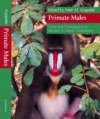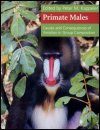![Primate Males Primate Males]()
Click to have a closer look
About this book
Contents
Customer reviews
Related titles
About this book
Provides an extensive overview of variation in group composition across all major primate taxa, using up-to-date reviews, case studies, evolutionary theory and theoretical models, setting primates into context with birds and other mammals.
Contents
Preface; Part I. Introduction: 1. The socioecology of primate males: history and theory Peter M. Kappeler; Part II. Comparative Perspectives on Male-Female Association: 2. Multi-male breeding groups in birds: ecological causes and social conflicts Nick B. Davies; 3. Males in macropod society Peter Jarman; 4. Social counterstrategies against infanticide by males in primates and other mammals Carel van Schaik; Part III. Variation in Male Numbers: Taxon-Level Analyses: 5. Causes and consequences of unusual sex ratios in lemurs Peter M. Kappeler; 6. The number of adult males in callitrichine groups and its implications for callitrichine social evolution Eckhard W. Heymann; 7. From binding brotherhoods to short-term sovereignty: the betwixting dilemma of male Cebidae Karen B. Strier; 8. The number of males in guenon groups Marina Cords; 9. Socioecology of baboons: the interaction of male and female strategies Robert A. Barton; 10. Variation in adult sex ratios of red colobus monkey social groups: implications for interspecific comparisons Thomas T. Struhsaker; 11. The number of males in langur groups: monopolizability of females or demographic process? Elisabeth H. M. Sterck and Jan A. R. A. M. van Hooff; 12. Costs and benefits of the one-male, age-graded and all-male phase in wild Thomas langur groups Romy Steenbeek, Elisabeth H. M. Sterck, Han de Vries and Jan A. R. A. M. van Hooff; 13. Male dispersal and mating season influxes in Hanuman langurs living in multi-male groups Carola Borries; 14. Rethinking monogamy: the gibbon case Volker Sommer and Ulrich Reichard; 15. Causes and consequences of variation in male mountain gorilla life histories and group membership David P. Watts; Part IV. Behavioural Aspects of Male Coexistence: 16. Relationships among nonhuman primate males: a deductive framework Jan A. R. A. M. van Hooff; 17. Collective benefits, free-riders and male extragroup conflict Charles L. Nunn; 18. Dominance, egalitarianism and stalemate: an experimental approach to male-male competition in Barbary macaques Signe Preuschoft and Andreas Paul; Part V. Evolutionary Determinants and Consequences: 19. The evolution of male philopatry in neotropical monkeys Theresa Pope; 20. Models of outcome and process: predicting the number of males in primate groups Jeanne Altmann; 21. Why are male chimpanzees more gregarious than mothers? A scramble competition hypothesis Richard W. Wrangham; 22. Male mating strategies: a modeling approach Robin I. M. Dunbar; Part VI. Conclusions: 23. Understanding male primates Michael E. Pereira, Timothy H. Clutton-Brock and Peter M. Kappeler; References; Index.
Customer Reviews
Edited By: Peter M Kappeler
316 pages, 74 figs, 43 tabs
This technical compendium will generate much debate in seminars and journals during the coming decade. Recommended for anthropological and zoological collections. Choice




















![Atlas des Mammifères Sauvages de France, Volume 3: Carnivores et Primates [Atlas of Wild Mammals of France, Volume 3: Carnivores and Primates]](http://mediacdn.nhbs.com/jackets/jackets_resizer_medium/26/263780.jpg?height=150&width=106)















